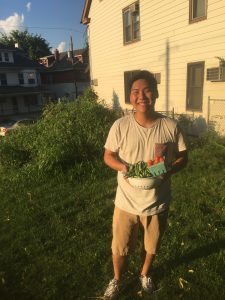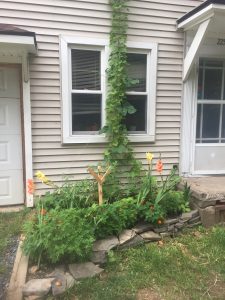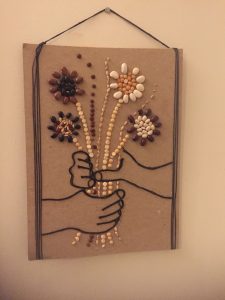(Phaseolus spp.)

Description
Members of the genus Phaseolus are annual herbaceous plants cultivated for their ripe seeds and unripe seed pods. The common beans most people are used to (green, kidney, navy, pinto, black, white, calypso, french) are all cultivars of the species Phaseolus vulgaris, however other common beans like lima, butter, spotted, and runner beans are in the genus Phaseoulus and have similar features and growth habits, so we will treat them together in this article as “beans”. Soy beans and fava beans, though more distantly related, are not in the genus Phaseoulus and will not be included on this page.
Most beans are vining plants that will wrap around branches, fences, or other trellises if given the opportunity, but some have been bred to be more stout and ‘bush-like’. We have seen vining beans that grow up to a second story window if properly trellised on the south-side of a building, but bushing varieties usually stay around a foot tall and about as wide.
Beans all have compound leaves that grow alternately around the vine or stem in groups of three leaflets. Each leaflet is heart or spade-shaped, varying in size from about 5 to 15 centimeters, depending on conditions and variety. Leaves are usually a dark green, but can have hints of or be entirely purple.
Flowers are usually only a centimeter or two large, and are usually white, pink, or purple, though some varieties can have red or yellow flowers.
The fruit of all beans is a long pod, usually green though sometimes purple or yellow, that can vary in size from about 1/2 centimeter wide and 5 cm long up to 5 cm wide and 25 cm long. Each pod contains a number of seeds, usually 3-10, which can vary in color from white to black to purple spotted and everything in between!

Cultivation Tips
Beans are very easy to start from seed. Simply push the seed about an inch or two below the soil line one week before the last frost date, with additional sowings ever 3-4 weeks until mid summer. You can also start beans indoors or under a row cover or cold frame one month earlier for transplant.
Vining beans need something to climb on, so plant along a fence, archway, or other trellis. Alternately, you can co-plant beans with corn or sunflowers like the Three Sisters!
Beans grow best in full sun and well-draining soil. Although beans will benefit from compost added to the soil in the autumn before planting, they will still grow very well without any soil amenities.
Once beans start to fruit, they will produce abundantly and quickly. It is important to pick the beans as fast as they pop up while they are still relatively young and tender! They should feel firm to the touch and snap when bent. As long as the beans are picked regularly (check every day, seriously, it’s insane how fast they grow!) they will continue to produce more. Cut the beans just above the top of the pod with a scissor or knife to avoid harming the rest of the plant.
About a month before the first frost date, stop picking the beans and let them dry out on the vine (or bush). Once the pods are brown and dry, cut them free and bring them inside to dry further in a dry, well-ventilated location for another week or so. Then remove the beans from the pods and store biggest beans from the largest pods in labeled envelopes for future planting. Smaller beans can be stored in glass jars (a washed out pasta sauce jar works great!) for use in the kitchen.
Uses
Beans are a delicious food that can be eaten raw or cooked. There’s something uniquely satisfying about the tasty crunch of a garden-fresh bean. Fresh beans will store for a week or two in the refrigerator, but will eventually go limp and lose that crunch, at which point you can steam or sauté them. Fresh beans that can’t be eaten right away (because there are so many!) can be pickled or blanched and frozen for later consumption. Dry beans will store for a year or more if completely dry and stored in an airtight container in the dark. To cook dry beans, soak them in water for 24 hours or boil them in a covered pot for about 20 minutes. Dry beans can also be ground up into flour and used for breads and other baked goods.
Beans are nitrogen fixers, meaning they can help build soil fertility and help other plants grow. We found that when we grew beans together with cucumbers, tomatoes, and basil they all grew exceptionally well! Because they fix nitrogen, beans make a good first year crop in a newly cultivated bed where the soil is not yet ideal.
Vining beans can be trellised up the south side of a house to help shade the structure in the summer. This not only keeps the building cool and reduces energy requirements and cooling costs, but also looks beautiful and provides lots of tasty beans!

Friends
Corn, sunflower, squash, radishes, cilantro, arugula, cucumbers
Note: beans tend to not get along well with alliums (garlic, onions, leeks, etc.)